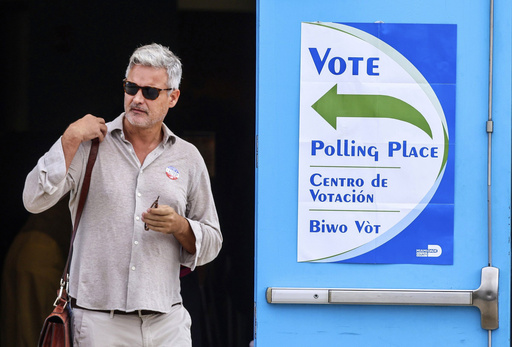
NEW YORK — The recent presidential campaign led by Donald Trump showcased a strong emphasis on traditional masculinity, specifically targeting young male voters. Throughout the campaign, Trump appeared on various podcasts that cater predominantly to male audiences, reinforcing this narrative. As the election neared, both Trump and his associates made sexist comments about Vice President Kamala Harris, which raised concerns among some supporters, including former presidential contender Nikki Haley, about further widening the gender gap with women voters. High-profile surrogates like Elon Musk and Charlie Kirk called for a significant turnout from male voters to help balance Harris’s anticipated support from women.
Ultimately, the divide in voting preferences based on gender was significant but not markedly different from historical trends. According to a comprehensive survey conducted across the nation, here are some key points to consider:
**The Gender Divide Remains Significant but Consistent**
The survey findings indicated that men were more inclined to vote for Trump compared to women. This trend has remained somewhat stable, as the preferences among men and women have only slightly shifted over time. Harris garnered the support of 53% of women, aligning closely with Trump’s 46%. Interestingly, this difference was less pronounced than the statistics reported in the 2020 election when President Joe Biden achieved 55% support from women, while only 43% voted for Trump. Historically, women have favored the Democratic candidate in every presidential election since 1996, according to a study by the Center for American Women in Politics.
**Trump Made Gains Among Male Voters**
In this election, Trump saw slight increases in support among both genders. His backing from men rose to 54% in 2024, compared to 51% in the previous election. Notably, these changes in voter preference were especially evident among younger demographics as well as Black and Latino communities. Voters from older demographics and among different genders expressed similar voting patterns in both 2020 and 2024. Young women under the age of 30 favored Harris over Trump, though their support dipped to 58% from Biden’s 65% in 2020.
Indications suggest that Trump’s strategy to connect with young men had a positive outcome, as more than half of the male voters under 30 backed him, a shift from the previous election where they predominantly supported Biden. Additionally, Trump’s appeal appeared to expand among young Black males, where about 30% of Black men under 45 voted for him—an increase from 2020. Latino male voters showed a decline in support for the Democratic nominee as well, with approximately half backing Harris, a decrease from 60% for Biden in the last election.
**Economic Issues Dominate Concerns**
This election also marked a pivotal moment as it was the first presidential election following the Supreme Court’s decision to overturn Roe v. Wade and a historic opportunity for the U.S. to elect its first female president. While issues surrounding sexism and misogyny motivated many women voters, economic concerns—particularly around immigration and inflation—were even more pressing and crossed gender lines.
Kelly Dittmar from the Center for American Women and Politics noted that while Trump’s victory was not solely rooted in those gender-related issues, he effectively harnessed the anxieties surrounding the shifting dynamics of gender roles and power structures. The outcomes of the survey suggested that a significant segment of the electorate was willing to overlook or even be energized by divisive rhetoric.
Interestingly, only 10% of women considered the electing of a female president as the primary reason for their votes, with 40% stating it was not a factor in their decision-making. Among Black women, the potential of electing a female president had more resonance, as one-third identified it as a central influence on their choices. Approximately 90% of Black women and 60% of Latina women supported Harris, while slightly less than half of white women voted for the vice president.
This nuanced understanding of voting demographics sheds light on the broader trends shaping the current political landscape, revealing that the complexities of gender, race, and economic concerns will continue to influence future elections.
